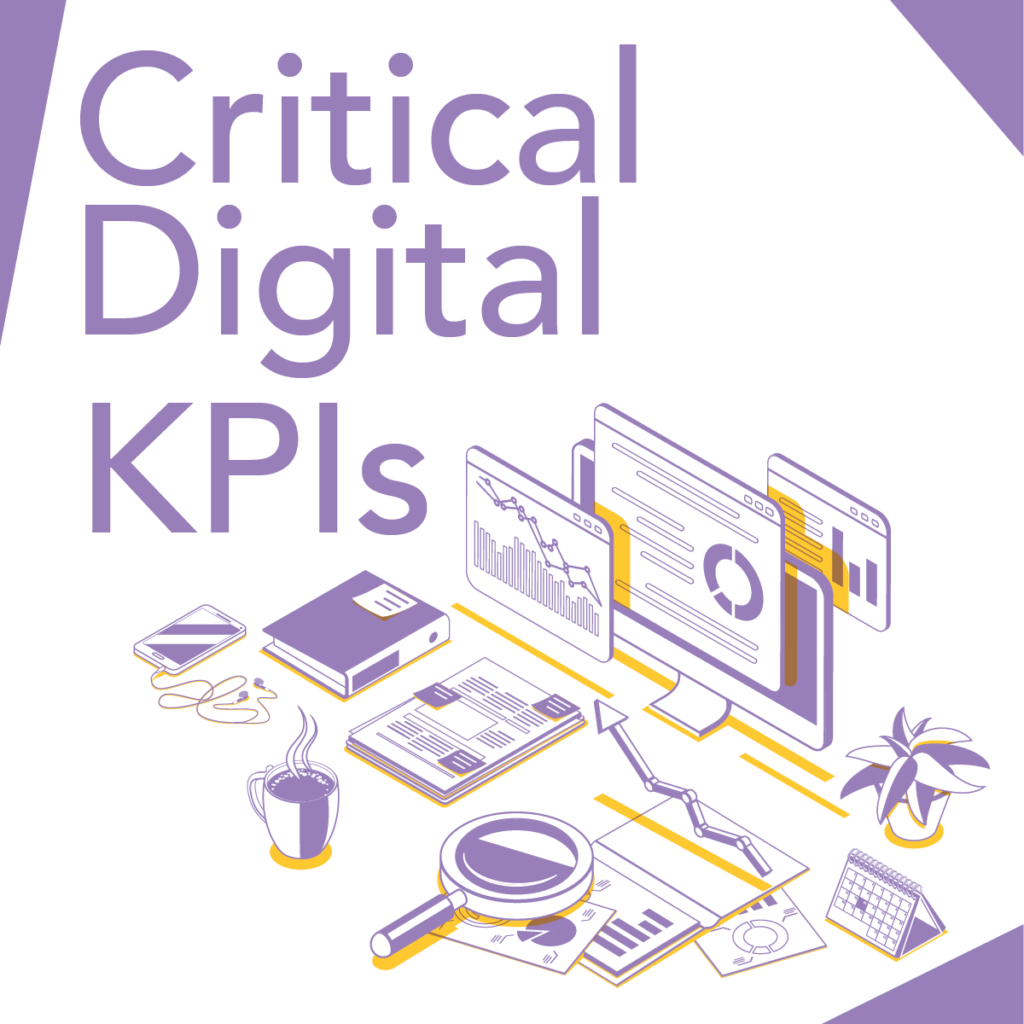 Businesses rely heavily on their online presence to reach and engage with their target audiences. To navigate the digital landscape effectively, it’s essential to have a solid understanding of your digital Key Performance Indicators (KPIs). These metrics not only help you keep a pulse on the performance of your online strategies but also help in making data-driven decisions to improve your digital marketing efforts. In this article, we’ll explore some of the most important digital KPIs to monitor and analyze for the success of your online initiatives.
Businesses rely heavily on their online presence to reach and engage with their target audiences. To navigate the digital landscape effectively, it’s essential to have a solid understanding of your digital Key Performance Indicators (KPIs). These metrics not only help you keep a pulse on the performance of your online strategies but also help in making data-driven decisions to improve your digital marketing efforts. In this article, we’ll explore some of the most important digital KPIs to monitor and analyze for the success of your online initiatives.
Businesses rely heavily on their online presence to reach and engage with their target audiences. To navigate the digital landscape effectively, it’s essential to have a solid understanding of your digital Key Performance Indicators (KPIs). These metrics not only help you keep a pulse on the performance of your online strategies but also help in making data-driven decisions to improve your digital marketing efforts. In this article, we’ll explore some of the most important digital KPIs to monitor and analyze for the success of your online initiatives.
Website Traffic
Website traffic is a fundamental KPI to monitor as it provides insights into the number of visitors your website attracts. Analyzing website traffic helps you understand the effectiveness of your digital marketing campaigns, content, and overall online presence. Key metrics to watch within website traffic include:
– Total Visits: The overall number of visitors to your website.
– Unique Visitors: The number of distinct individuals who visit your site.
– Pageviews: The total number of pages viewed on your site.
– Time on Site: How long your visitors are browsing your pages.
Monitoring these metrics helps you identify trends, assess the impact of marketing campaigns, and determine areas for improvement.
Conversion Rate
Conversion rate is a critical KPI that measures how effectively your website turns visitors into customers or leads. It can vary depending on your specific goals, such as opening a new account, signing up for a newsletter, or filling out a contact form. Calculating your conversion rate can be determined by dividing the number of conversions by the total number of visitors and multiplying by 100 to get a percentage. Tracking conversion rates allows you to pinpoint which parts of your website and marketing strategies are most effective at driving revenue and where you might need to make improvements.
Click-Through Rate (CTR)
CTR is a key KPI for assessing the performance of online ads and email marketing campaigns. It measures the percentage of people who click on a specific link or call-to-action (CTA) out of the total number of people who view it. High CTR indicates that your messaging and creative elements are resonating with your audience. CTR can be monitored for various digital channels, including email, search engine ads, social media ads, and display ads, providing insights into which channels and campaigns are most effective.
Bounce Rate
The bounce rate measures the percentage of visitors who leave your website after viewing only one page, without interacting further. A high bounce rate can be indicative of issues like slow page load times, irrelevant content, or a poor user experience. Monitoring bounce rates helps you identify areas for improvement in your website’s design, content, and user engagement strategies.
Customer Acquisition Cost (CAC)
CAC is a financial KPI that calculates the cost of acquiring a new customer through your digital marketing efforts. It includes expenses related to advertising, content creation, and marketing campaigns. Knowing your CAC helps you evaluate the efficiency of your marketing budget and prioritize channels and strategies that provide the best return on investment.
Customer Lifetime Value (CLV)
CLV measures the total revenue a customer is expected to generate during their entire relationship with your business. It’s an essential KPI for understanding the long-term value of your customers and the potential return on your marketing investment. By comparing CAC and CLV, you can determine whether your digital marketing efforts are sustainable and profitable in the long run.
Social Media Engagement
For businesses active on social media, monitoring engagement metrics is crucial. These include likes, shares, comments, and followers gained over time. High engagement indicates that your content is resonating with your audience and helps increase brand awareness and loyalty. Analyzing social media engagement can guide content creation and posting strategies to maximize your reach and impact.
Email Marketing Metrics
Email marketing remains a powerful digital tool, and several KPIs should be closely monitored:
– Open Rate: The percentage of recipients who open your email.
– Click-Through Rate (CTR): The percentage of recipients who click on links within your email.
– Click-To-Open-Rate (CTOR): The percentage of recipients who opened and clicked within your email over all recipients that opened the email.
– Conversion Rate: The percentage of recipients who take the desired action (e.g., open an account) after clicking on your email.
– Unsubscribe Rate: The percentage of recipients who choose to opt out of your email list.
By analyzing these metrics, you can refine your email marketing campaigns to better engage your audience and drive conversions.
Monitoring and analyzing digital KPIs is an essential part of a successful online strategy. These metrics provide invaluable insights into the performance of your digital marketing efforts, helping you make data-driven decisions to optimize your campaigns and improve your online presence. By regularly assessing and adjusting your strategies based on these and other KPIs, you can enhance your business’s digital performance, reach, and overall success.
